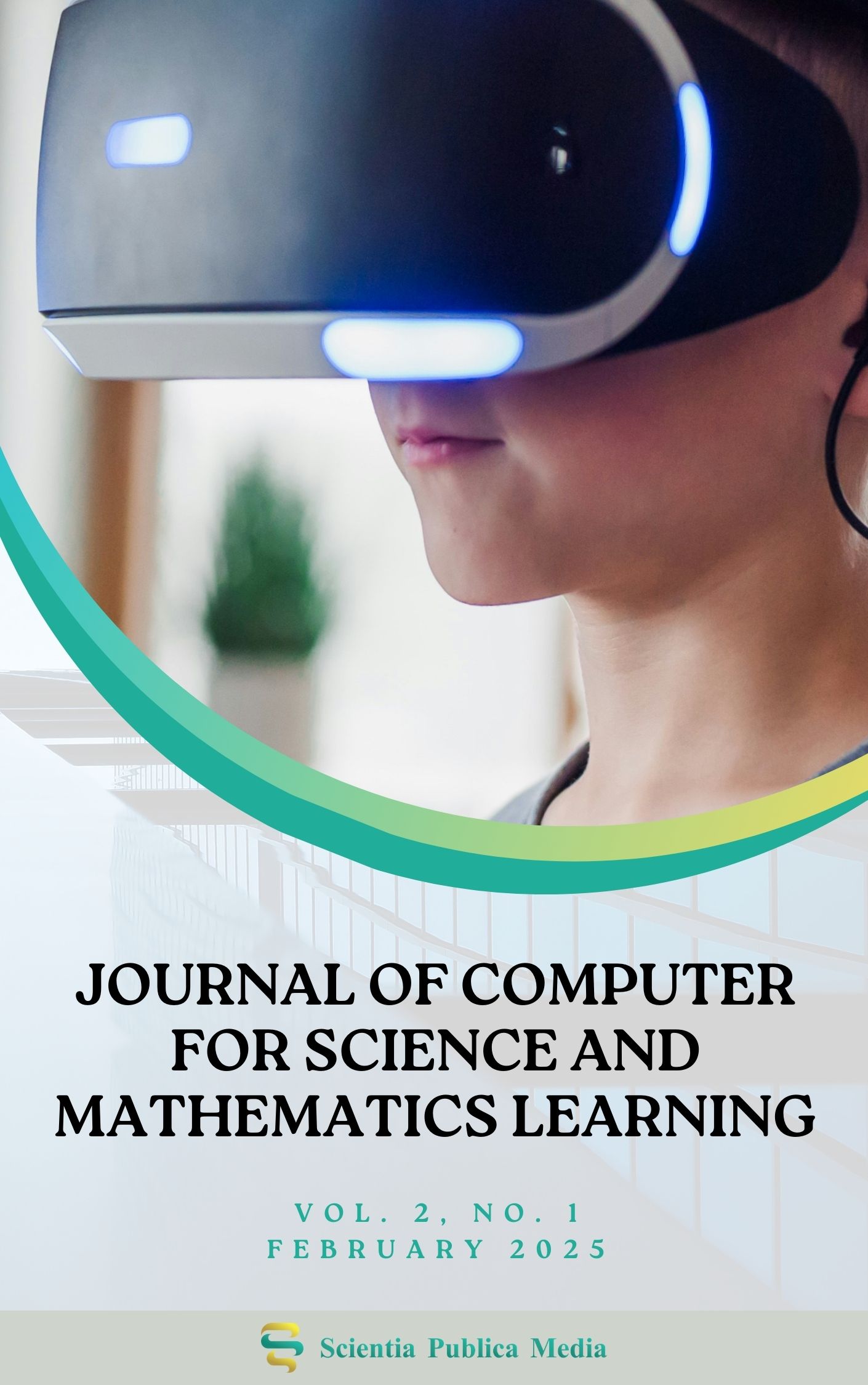Exploring Students’ Perceptions of the Impact of Computer Multimedia on Their Teachers’ Motivation
DOI:
https://doi.org/10.70232/jcsml.v2i1.13Keywords:
Computer Multimedia, Students’ Perceptions, Teacher MotivationAbstract
Educational media is launched, and it means all the tools used to make the teaching and learning process successful, from audible speeches and written texts, and all visuals from drawings, data, still and moving images. In general, it is called everything that can act as a mediator between a teacher and a learner, or represents a cognitive outlet to pass a message or educational content. The most important development issues that form the basis of the progress of societies and their ability to face the many and accelerating challenges they face are preparing teachers and increasing and enhancing their motivation towards education in a manner that is consistent with the requirements of the current era. The challenges facing the world’s societies are large and multiple, and it is difficult to predict their size and the extent of their impact. They are characterized by being deeper and more complex, so we must keep pace with current global developments by preparing an individual capable of creativity and development. Motivating teachers increases the performance of their duties and helps teachers discover the educational difficulties facing students and the ability to control, overcome and address them. Therefore, this study aimed to explore the relationship between the motivation of mathematics teachers through computer multimedia and students’ perceptions. To collect quantitative and qualitative data to know students’ perceptions of teachers’ motivation, the researcher conducted a questionnaire that included 12 mathematics teachers and 407 randomly selected students. The researcher used the Likert scale in his study, and to collect and analyze the data, the descriptive approach was used, and the SPSS program was adopted to analyze the results and hypotheses. The results showed that computer multimedia increases mathematics teachers’ motivation according to students’ perceptions.
Metrics
References
Aldahdouh, T.Z., Nokelainen, P., & Korhonen, V. (2020). Technology and social media usage in higher education: The influence of individual innovativeness. SAGE Open, 10(1), p.2158244019899441. http://dx.doi.org/10.1177/2158244019899441
Aljawarneh, S.A. (2020). Reviewing and exploring innovative ubiquitous learning tools in higher education. Journal of Computing in Higher Education, 32(1), 57-73. https://doi.org/10.1007/s12528-019-09207-0
Alotaibi, N. B. (2019). Cyberbullying and the expected consequences on the student’s academic achievement. IEEE Access, 7, 153417–153431. https://doi.org/10.1109/ACCESS.2019.2947163
Amin, F.M., & Sundari, H. (2020). EFL students’ preferences on digital platforms during emergency remote teaching: Video Conference, LMS, or Messenger Application? Studies in English Language and Education, 7(2), 362-378. https://doi.org/10.24815/siele.v7i2.16929
Ansari, J. A., & Khan, N. A. (2020). Exploring the role of social media in collaborative learning the new domain of learning. Smart Learning Environments, 7(1), 1-16. https://doi.org/10.1186/s40561-020-00118-7
Awidi, I. T., Paynter, M., & Vujosevic, T. (2019). Facebook group in the learning design of a higher education course: An analysis of factors influencing positive learning experience for students. Computers & Education, 129, 106-121. https://doi.org/10.1016/j.compedu.2018.10.018
Bardakci, S. (2019). Exploring high school students’ educational use of YouTube. International Review of Research in Open and Distributed Learning, 20(2), 260–278. https://doi.org/10.19173/irrodl.v20i2.4074
Barton, B.A, Adams, K.S., Arrastia-Chisholm, M.C., & Browne, B.L (2021) The effects of social media usage on attention, motivation, and academic performance. Active Learning in Higher Education, 22(1), 11–22. https://doi.org/10.1177/1469787418782817
Bergdahl, N., Nouri, J., Fors, U., & Knutsson, O. (2020). Engagement, disengagement, and performance when learning with technologies in upper secondary school. Computers & Education, 149, 103783. https://doi.org/10.1016/j. compedu.2019.103783
Chen, Y.- C. (2015). Linking learning styles and learning on mobile Facebook. The International Review of Research in Open and Distributed Learning, 16(2). https://doi.org/10.19173/irrodl.v16i2.2038
Dewi, P. W. (2024). Online module: Bibliometric analysis (1998–2023). Journal of Research in Mathematics, Science, and Technology Education, 1(1), 47–61. https://doi.org/10.70232/xa9mv566
Ellahi, A. (2018). Social networking sites as formal learning environments in business education. Journal of Educational Technology & Society, 21(4), 64-75.
Faizi, R. (2018). Moroccan higher education students’ and teachers’ perceptions towards using web 2.0 technologies in language learning and teaching. Knowledge Management & E-Learning, 10(1), 86-96.
Feyzi Behnagh, R., & Yasrebi, S. (2020). An examination of constructivist educational technologies: Key affordances and conditions. British Journal of Educational Technology, 51(6), 1907-1919.
Gazibara, T., Cakic, J., Cakic, M., Grgurevic, A., & Pekmezovic, T. (2020). Searching for online health information instead of seeing a physician: A cross-sectional study among high school students in Belgrade, Serbia. International Journal of Public Health, 1–10. https://link.springer.com/article/10.1007/s00038-020-01471-7
Hennink, M. M., Kaiser, B. N., & Marconi, V. C. (2017). Code saturation versus meaning saturation: how many interviews are enough? Qualitative Health Research, 27(4), 591-608.
Jogezai, N. A., Baloch, F. A., Jaffar, M., Shah, T., Khilji, G. K., & Bashir, S. (2021). Teachers’ attitudes towards social media (SM) use in online learning amid the COVID-19 pandemic: the effects of SM use by teachers and religious scholars during physical distancing. Heliyon, 7(4), e06781. https://doi.org/10.1016/j.heliyon.2021.e06781
Kasperski, R., & Blau, I. (2020). Social capital in high schools: Teacher-student relationships within an online social network and their association with in-class interactions and learning. Interactive Learning Environments, 1–17. https://doi.org/10.1080/10494820.2020.1815220
Manca, S. (2020) Snapping, pinning, liking or texting: Investigating social media in higher education beyond Facebook. The Internet and Higher Education, 44, 100707. https://doi.org/10.1016/j.iheduc.2019.100707
Masood, A., Luqman, A., Feng, Y., & Ali, A. (2020). Adverse consequences of excessive social networking site use on academic performance: Explaining underlying mechanism from stress perspective. Computers in Human Behavior, 113, 106476. https://doi.org/10.1016/j.chb.2020.106476
Melati, M., & Hadinugrahaningsih, T. (2024). The effect of numbered head together (NHT) in a flipped classroom environment on students’ self-efficacy and achievement on colloid topics. Journal of Research in Education and Pedagogy, 1(1), 24-29. https://doi.org/10.70232/c99bex94
Molla-Esparza, C., López-González, E., & Losilla, J. (2020). Sexting prevalence and socio-demographic correlates in Spanish secondary school students. Sexuality Research and Social Policy, 1–15. https://doi.org/10.1007/s13178-020-00434-0
Downloads
Published
Issue
Section
License
Copyright (c) 2025 Khaled Ahmed Aqeel Alzoubi

This work is licensed under a Creative Commons Attribution-NonCommercial 4.0 International License.


